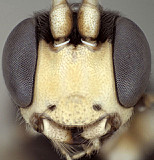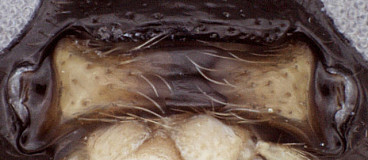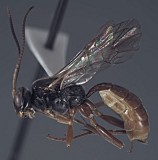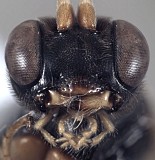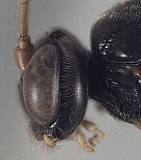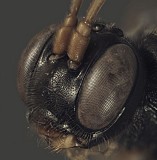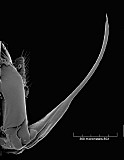Stiphrosomus Foerster, 1869: 198. Type species: Ichneumon fuscicornis Gmelin, 1790. Subsequent designation by Viereck (1914: 139). Preoccupied by Stiphrosomus Fieber, 1858. Synonymized with Trapezocora by Perkins (1962: 453, 458) and with Sympherta by Townes et al. (1965).
Trapezocora Foerster, 1869: 208. Type species: Mesoleptus antilope Gravenhorst, 1829. Subsequent designation by Perkins (1962: 458). Synonymized with Sympherta by Townes et al. (1965).
Atrestes Foerster, 1869: 209. Type species: Catoglyptus sulcatus Thomson. Subsequent designation by Perkins (1962). Synonymized with Trapezocora by Perkins (1962: 408, 458) and with Sympherta by Townes et al. (1965).
Campogenes Foerster, 1869: 209. Type species: Mesoleptus antilope Gravenhorst. Subsequent designation by Perkins (1962). Synonymized with Trapezocora by Perkins (1962: 412, 458) and with Sympherta by Townes et al. (1965).
Provancherella Dalla Torre, 1901: 305. Type species: Baryceros rhopalocerus Provancher [= Sympherta burra (Cresson)]. Monobasic.Townes et al. (1965).
Eustiphrosomus Hincks, 1944: 34. Replacement name for Stiphrosomus Foerster, 1869, not Stiphrosomus Fieber, 1858. Synonymized with Trapezocora by Perkins (1962: 458) and with Sympherta by Townes et al. (1965).
The history of usage of the genus-group name for this group of species is interesting, and rationale for use of Sympherta is not straightforward. Dalla Torre, 1901 kept all 5 of Foerster’s genera as valid, but only included species in Sympherta and Stiphrosomus. Viereck (1914) designated type species for Sympherta and Stiphrosomus, but simply noted that no species had yet been included in the other three genera. Townes (1945) included Sympherta, Stiphrosomus, and Provancherella as synonyms of Pion Schiodte. Perkins (1962) followed Townes (1945) and retained Sympherta as a junior synonym of Pion while noting that the inclusion of North American species in Pion needed investigation. Perkins (1962) placed the other Foerster genera listed above as junior synonyms of Trapezocora. Townes et al. (1965) placed Trapezocora as a synonym of Sympherta, resurrecting the later from synonymy with Pion. Given the synonymies in Perkins (1962), Townes et al. (1965) could just as easily have treated Sympherta as a junior synonym of Trapezocora since the two were equally available, but they did not. Townes (1970) solidified this synonymy and Sympherta has been accepted as the valid name by Hinz (1991) and others. Townes (1970) also stated that prior to his work, the species had usually been placed in Stiphrosomus.

